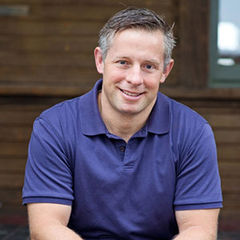One of the things that I love to do when I have the opportunity to travel and work out at different gyms is to read the biographies of the trainers that are typically posted on the wall of each facility. One common theme many trainers share in their bios is the fact that they teach their clients “perfect” exercise form. This sounds like a good thing—after all, who would be interested in working with a trainer whose bio said, “I don't pay any attention to form.” I'm not saying that teaching clients how to move properly isn't important, but consider this:
1. Isn't the gym the only place where we repeat the same movements over and over exactly the same way each time?
2. Aren't movements required for many of life's tasks or sporting activities inherently variable?
3. Are we doing our clients a disservice by emphasizing “perfect” form?
4. Shouldn't part of the training process be to teach movement as a reflexive skill so that clients learn how to self-correct and reposition their bodies to adequately control any applied forces?
If human beings performed the exact same movements the exact same way every time, would a batter ever strike out? Would a golfer ever shank or slice a ball into the rough? Would a basketball player ever miss a free throw? The answer to these questions is, of course, no because human movement is completely variable.
Think about how you get up and down from seated positions during the course of the day. Every time you go to stand up from a seated position, you will place your feet in a slightly different position, which changes the motion of the foot, ankle, knee and hip joints, as well as alters the lines of pull through the muscles involved in generating the necessary force to stand up. Compare that to how many of us teach the traditional squat pattern when working with clients or teaching classes. Based on the common tradition of teaching "perfect form," we often cue clients (and class participants) to set their feet hip- to shoulder-width apart and maintain spinal extension with a symmetrical alignment of the feet while lowering and raising a weight against the downward pull of gravity.
Doing perfectly symmetrical squats in the gym can help improve strength in that specific pattern, but it may not adequately develop the ability to use the entire network of muscle, fascia and elastic connective tissue responsible for producing the tension necessary to mitigate the stress placed on the body by the competing forces of gravity and ground reaction (an upward force generated when the feet hit the ground).
Fascia is connective tissue that maintains a constant balance between synthesizing new cells and remodeling existing cells in response to applied forces from both within and outside of the body. As trainers and instructors it is important that we consider the body as a network of fascia and connective tissue organized into one single, integrated system responsible for establishing a constant equilibrium of forces. Understanding how to challenge clients (and class participants) to develop reflexive control of body position can help make workouts more fun by progressing the level of difficulty to include a wide variety of creative movement-based exercises.
Traditional gym exercises such as the squat teach us how to lift a weight and control mass in a vertical direction against the downward pull of gravity, but let's consider many of the chores and tasks that we perform throughout the course of our normal daily lives. Don't we often use the entire body to carry or move a mass from one place to another through gravity, not simply against it? It’s the network of muscle, fascia and elastic connective tissue that generates the tension required to control a mass as we move through gravity. Consider the following daily activities, chores or tasks that many adults encounter on a regular basis:
• Carrying laundry
• Moving groceries from the store to the car and into the home
• Placing young children in car seats, cribs, high chairs or strollers
• Navigating a busy urban sidewalk while carrying a bag
• Holding a cup of coffee and typing out a text message
• Moving from one airport terminal to another to make a connecting flight while carrying a computer bag and pulling a suitcase
These tasks become easier if we have the ability to generate forces throughout the entire body. Back to the idea of teaching "perfect" form, it's important that we invest the time to help clients improve efficiency and coordination through the basic patterns of movement: squatting, lunging, pushing, pulling and rotating. However, once those patterns have been learned it is essential to help clients learn how to generate and control the muscle forces required to move a mass through gravity instead of directly against it. Performing multi-directional movements while carrying loads like groceries, laundry or even young children is the kind of thing many clients do in their daily lives, but these same movements are often omitted from traditional exercise programs. If a client can perform resistance-training exercises in a variety of movement patterns, he or she can train and prepare for the constantly changing challenges that can occur in daily life.
For example, once a client learns how to squat efficiently you can have him or her perform squats with the feet in different positions: the right foot forward for one set, the left foot the next and a wide (or narrow) stance for the third set. Simply changing foot patterns can help the muscles and fascia develop the ability to respond to forces individuals might encounter while moving furniture around a room at home, for example.
Exercise is a function of movement. Movement is a function of the nervous system regulating forces throughout the structures of muscle, fascia and elastic connective tissue and is inherently variable because no two movements are ever performed the exact same way twice. Designing movement-based exercise programs that challenge clients through a variety of patterns can improve coordination, movement skill and, because the body burns 5 calories to consume 1 liter of oxygen, using more muscles per exercise can increase the energy expenditure of the workout. If we know how to challenge our clients with variability in their exercise programs we can help them learn the safest, most effective solutions for safely executing the movements they have to perform on a regular basis.




 by
by 






 by
by